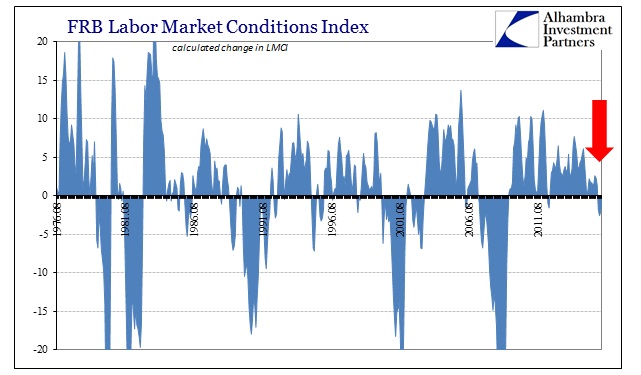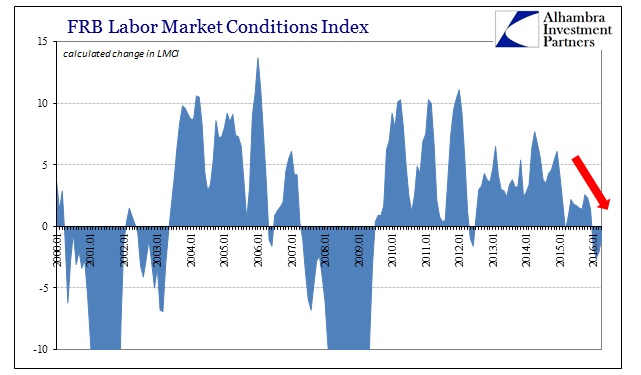If the Fed is data dependent in its monetary policy setting, then the current update for the labor market should keep them still inactive (or at least not raising the federal funds rate that nobody uses). While the main payroll report last Friday was disappointing, it remains largely irrelevant as does the unemployment rate in determining FOMC tendencies. We are told that the Committee has committed itself to a broader survey or measure of the labor market and it even came up with its own index to accomplish the task.
If they remain true to that word, then there is no way there will be rate hikes soon. The Fed’s Labor Market Conditions Index was negative for the fourth straight month in April. Though the change was only -0.9, slightly better than February and March, the index has not seen four consecutive contractions since 2009. Worse, the 6-month average turned negative for the first time this “cycle.”


The six-month average may be most significant, however, as the last two times that this has occurred with respect to the downswing in each cycle turned out to be actual labor inflections. The prior shift in the 6-month LMCI average was July 2007. As of current Establishment Survey estimates, that was the first monthly decline in payrolls of what would become shortly thereafter the Great Recession. You have to go back forty-seven months before that, to the “jobless recovery” of 2003, to find a negative month in the Establishment Survey.

More importantly, after July 2007 there were only five more months of weakly positive estimates before giving way into full-blown and nasty recession.
The pattern is repeated in the dot-com cycle, as the 6-month average for the LMCI turned negative starting June 2000. That was also the first negative payroll print in almost three years before it, and only the second time that happened dating back to 1995. As 2007, there were only five more positive months before the Establishment Survey shows the full weight of the dot-com recession into 2001.













Leave A Comment